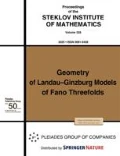Abstract
We present a new theoretical approach to the processing of multidimensional and multicomponent images based on the theory of commutative hypercomplex algebras, which generalize the algebra of complex numbers. The main goal of the paper is to show that commutative hypercomplex numbers can be used in multichannel image processing in a natural and effective manner. We suppose that animal brains operate with hypercomplex numbers when processing multichannel retinal images. In our approach, each multichannel pixel is regarded as a \(K\)-dimensional (\(K\)D) hypercomplex number rather than a \(K\)D vector, where \(K\) is the number of different optical channels. This creates an effective mathematical basis for various function–number transformations of multichannel images and invariant pattern recognition.
Similar content being viewed by others
REFERENCES
T. W. Cronin and N. J. Marshall, “A retina with at least ten spectral types of photoreceptors in a mantis shrimp,” Nature 339, 137–140 (1989). https://doi.org/10.1038/339137a0
C.-I Chang, Hyperspectral Data Processing: Algorithm Design and Analysis (Wiley, New York, 2013).
R. A. Schowengerdt, Remote Sensing: Models and Methods for Image Processing (Academic, New York, 1997).
Computer Image Processing, Part II: Methods and Algorithms, Ed. by V. A. Soifer (VDM, Berlin, 2010).
R. K. Luneburg, “The metric of binocular visual space,” J. Opt. Soc. Am. 40 (10), 627–642 (1950).
R. K. Luneburg, “The metric methods in binocular visual perception,” in Studies and Essays Presented to R. Courant on His 60th Birthday (Interscience, New York, 1948), pp. 215–240.
V. Labunets, “Clifford algebra as unified language for image processing and pattern recognition,” in Computational Noncommutative Algebra and Applications, Ed. by J. Byrnes and G. Ostheimer (Kluwer, Dordrect, 2004), pp. 197–225.
V. Labunets, E. Rundblad, and J. Astola, “Is the brain a “Clifford algebra quantum computer”?,” in Applications of Geometric Algebras in Computer Science and Engineering, Ed. by L. Dorst, C. Doran, and J. Lasenby (Birkhäuser, Boston, 2002), pp. 285–295. https://doi.org/10.1007/978-1-4612-0089-5_25
V. Labunets, E. Labunets-Rundblad, and J. T. Astola, “Algebra and geometry of color images,” in Proceedings of the First International Workshop on Spectral Techniques and Logic Design for Future Digital Systems, Tampere, Finland, 2000, Ed. by J. Astola and R. Stancovic (Tampere Univ. Press, Tampere, 2000) pp. 231–261.
C. J. L. Doran, Geometric Algebra and Its Application to Mathematical Physics (Cambridge Univ. Press, Cambridge, 1994).
Ch. Greaves, “On algebraic triplets,” Proc. Royal. Irish Acad. 3, 51–108 (1847).
E. Rundblad-Labunets and V. Labunets, “Spatial-color Clifford algebras for invariant image recognition,” in Geometric Computing with Clifford Algebras, Ed. by G. Sommer (Springer, Berlin, 2001), pp. 155–184. https://doi.org/10.1007/978-3-662-04621-0_7
E. L.-Rundblad, V. Labunets, and I. Nikitin, “A unified approach to Fourier–Clifford–Prometheus sequences, transforms and filter banks,” in Computational Noncommutative Algebra and Applications, Ed. by J. Byrnes and G. Ostheimer (Kluwer, Dordrect, 2004), pp. 389–400. https://doi.org/10.1007/1-4020-2307-3_14
E. L.-Rundblad, A. Maidan, P. Novak, and V. Labunets, “Fast color Wavelet–Haar–Hartley–Prometheus transforms for image processing,” in Computational Noncommutative Algebra and Applications, Ed. by J. Byrnes and G. Ostheimer (Kluwer, Dordrect, 2004), pp. 401–411. https://doi.org/10.1007/1-4020-2307-3_15
V. Labunets, E. Labunets-Rundblad, and J. Astola, “Is the visual cortex a “Fast Clifford algebra quantum computer”?,” in Clifford Analysis and Its Applications (Kluwer Acad., Dordrecht, 2001), NATO Science Ser. II: Mathematics, Physics and Chemistry 25, pp. 173–182. https://doi.org/10.1007/978-94-010-0862-4_17
V. G. Labunets, A. Maidan, E. Rundblad-Ostheimer, and J. Astola, “Colour triplet-valued wavelets and splines,” in Proceedings of the Second International Symposium on Image and Signal Processing and Analysis, Pula, Croatia, 2001, pp. 535–541. https://doi.org/10.1109/ISPA.2001.938687
Funding
This work was supported by the Russian Foundation for Basic Research (project no. 19-29-09022).
Author information
Authors and Affiliations
Corresponding author
Additional information
Translated from Trudy Instituta Matematiki i Mekhaniki UrO RAN, Vol. 26, No. 3, pp. 69 - 83, 2020 https://doi.org/10.21538/0134-4889-2020-26-3-69-83.
Translated by I. Tselishcheva
Rights and permissions
About this article
Cite this article
Labunets, V.G. Hypercomplex Models of Multichannel Images. Proc. Steklov Inst. Math. 313 (Suppl 1), S155–S168 (2021). https://doi.org/10.1134/S0081543821030160
Received:
Revised:
Accepted:
Published:
Issue Date:
DOI: https://doi.org/10.1134/S0081543821030160




